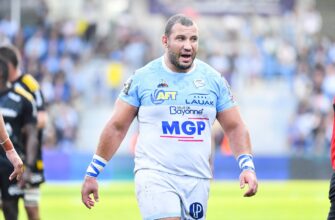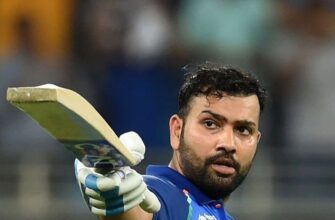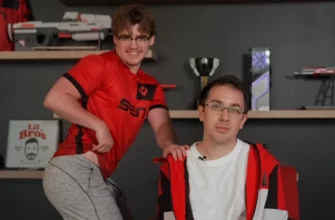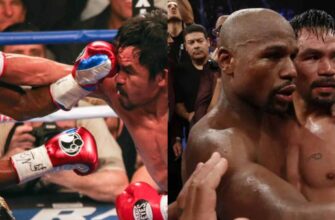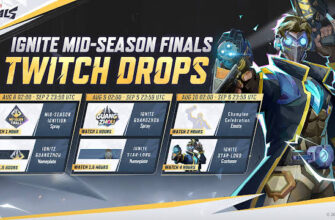For decades, the frosty digital arenas of EA Sports` NHL franchise have served as the virtual battleground for hockey enthusiasts. From the pixelated glory days of the early 90s to the breathtaking realism of current-generation consoles, the series has consistently aimed to capture the visceral thrill of the sport. With the arrival of NHL 26, the venerable franchise once again steps onto the ice, not just to maintain its dominion, but to actively redefine the nuances of virtual hockey. This latest iteration promises more than just updated rosters; it`s a testament to a continuous, often challenging, quest for hyperrealism and player immersion.
The Relentless Pursuit of Reality: ICE-Q 2.0 and Beyond
At the heart of NHL 26`s architectural overhaul lies ICE-Q 2.0, a new gameplay intelligence system powered by real-world NHL EDGE statistics. This isn`t merely a fancy name for improved AI; it`s a commitment to embedding authentic professional hockey dynamics directly into the game`s core. The goal is to enhance in-game player movement and responsiveness, creating a flow that mirrors the unpredictable, high-speed ballet of a live NHL game. For players, this means that their virtual counterparts should react with a level of situational awareness previously unseen, making passes crisper, defensive positioning more intelligent, and offensive rushes feel genuinely organic. It’s an ambitious leap, bridging the gap between statistical data and dynamic gameplay, striving to make every shift feel like a segment of a real broadcast.
Goalkeeping Reimagined: The Last Line of Digital Defense
Perhaps one of the most critical, and often frustrating, aspects of any hockey simulation is the goaltending. In NHL 26, EA Sports has evidently listened to years of player feedback, implementing a much-needed fine-tuning of the goaltending dynamic. The introduction of Goalie Crease Control, bolstered by “save wall technology,” is a significant step forward. This new system allows virtual netminders to execute saves in ways that are, by design, more humanly plausible and impressively acrobatic. Goalies are now programmed to poke check more frequently and guard their posts with a renewed sense of urgency and precision. Creative Director Mike Englehart succinctly summarized their intent: “They are the core meta of our game, keeping the puck out of the net. This year, they`re going to be smarter, more aware, and more reactive than they`ve ever been before.”
This enhanced efficiency is supported by a staggering 81 new goaltender animations, designed to facilitate split-second reflexes. The addition of secondary animations to specifically address deflected shots further illustrates the depth of this overhaul. What`s truly revolutionary, however, is the addition of emotional and reactionary elements: a goalie surrendering a “soft” goal might display visible dejection or anger, adding a layer of psychological realism that impacts the immersive experience. In essence, the game`s goalies are no longer just physics objects with pre-set save percentages; they are characters reacting to the chaotic ballet unfolding in front of them, a breath of fresh air for those who appreciate the nuanced art of goaltending.
Crafting a Career: The “Be a Pro” Odyssey
In the expansive landscape of modern sports video games, career modes have become the bedrock of player engagement. NHL 26`s “Be a Pro” mode continues this tradition, inviting users on a deeply personal journey from aspiring junior talent to potential NHL superstar. Gone are the days of a simplistic, almost immediate ascent; players now begin by choosing a team in the WHL, OHL, or QMJHL, immersing themselves in the junior hockey circuit. The narrative arc kicks off with the IIHF U20 World Junior tournament, leading directly into the high-stakes NHL Draft, where conversational choices can genuinely influence a player`s draft stock.
Post-draft, the preseason becomes a crucial proving ground, with specific milestones determining whether one makes the NHL club or begins a stint in the American Hockey League. What elevates this mode is the introduction of realistic, contextual conversations with coaches, general managers, and even existing NHL players. This feedback loop provides a tangible sense of progression and accountability, making the player feel genuinely part of a professional organization. “Be a Pro” in NHL 26 isn`t just about accumulating stats; it`s about navigating the emotional and strategic complexities of a hockey career, cementing its status as a compelling narrative experience.
The Fine Line of Feedback: The “Form Score” Conundrum
While NHL 26 introduces numerous improvements, no virtual simulation is without its quirks. One area that has garnered a peculiar reputation is the Form Score within “Be a Pro” mode. Designed as a metric to influence ice time, team reputation, and coach`s trust, the Form Score aims to inject a dose of realism into player performance evaluations. After all, even the best players have off-nights, take a bad shot, or miss a defensive assignment, which rightly irks a coach.
However, the execution sometimes falters, leading to questionable grading scenarios. For instance, an open slot shot that narrowly misses the top corner might be inexplicably labeled a “badly aimed shot.” Similarly, a forward`s diligent skate back on defense after a turnover can still result in a penalty for “failing to get back,” despite immediate effort. These instances, while perhaps minor in isolation, can become a source of frustration over extended play, highlighting the perennial challenge developers face: how to perfectly translate the subjective chaos of human performance into an objective, algorithmic scoring system. It’s a classic case where the ambition for granular realism sometimes trips over the practicalities of digital interpretation. One might even suggest the virtual coaches need to calm down a little, or at least invest in better virtual binoculars.
Overall, NHL 26 stands as a significant, albeit imperfect, evolution for the EA Sports hockey franchise. With its commitment to leveraging real-world data via ICE-Q 2.0, the revolutionary overhaul of goaltending mechanics, and the continued narrative depth of “Be a Pro” mode, the game solidifies its position as the premier hockey simulation. While the “Form Score” offers a glimpse into the complexities of balancing realism with player satisfaction, it does little to detract from the game`s overall appeal. As the Tkachuk family graces the cover, symbolizing both gritty play and legacy, NHL 26 invites players to experience a virtual hockey world that is more intelligent, more immersive, and more authentically exhilarating than ever before.


